August 10, 2017
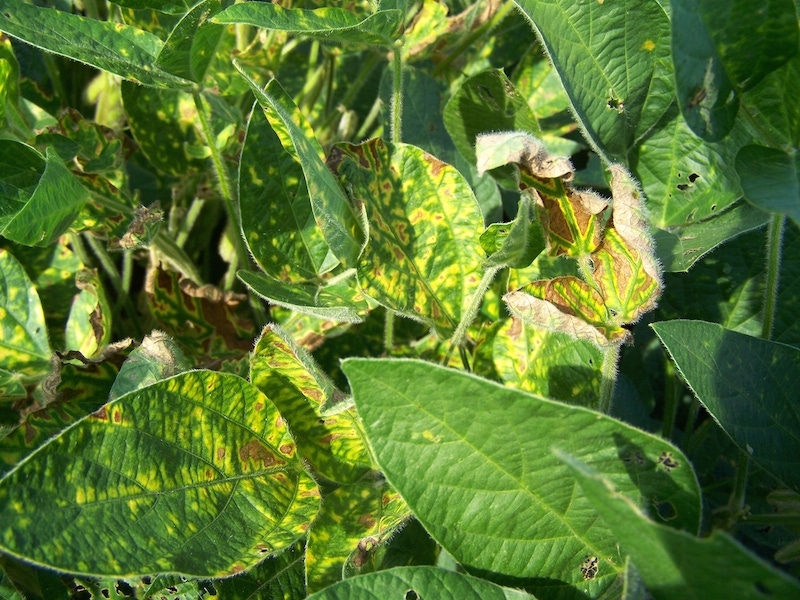
I don’t think too many people in the state will deny that Ohio’s planting conditions were tough. We had a mix of saturated soils and cool temperatures. We have several soil borne pathogens that love these conditions, among them is Sudden death syndrome, which is caused by Fusarium virguliforme. In Ohio, this disease tends to occur with greater frequency in fields that have higher populations of soybean cyst nematode. With the environmental conditions we had earlier this spring, extensive flooding injury, I would not be surprised to see a much wider distribution of this disease in the state.

The most common symptom occurring at this time, as soybeans reach growth stage R5, as they start to fill out the pods are patches of soybean with yellowing in the leaves (Figure 1). This yellow will expand on the leaf and the centers will turn brown or necrotic. This fungus produces a toxin as it colonizes the crown (base of the plant). The toxin moves through to the top of the plant and causes the initially yellow and then necrotic or dead areas between the veins. As the disease develops, severely affected leaves will die and drop from the plants and leave the petioles. This fungus is a very good root rotter, and if you dig a few plants and look at the roots, especially after a rain, there may be blue green growth on the top and outside of the root. These are the spores of the fungus. This fungus will survive in the affected fields in this old plant residue and as specialized fungal structures in the soil. Meaning, it’s not going anywhere.
There are several very good options for management now. The first is host resistance. This will be a very good year to a) see which fields have high populations of this pathogen, but b) score the resistance of varieties. Through a check-off funded project from Ohio Soybean Council we have been able to participate in a variety trial. I have been amazed at the change or shift towards high-yielding resistant lines (Figure 2).
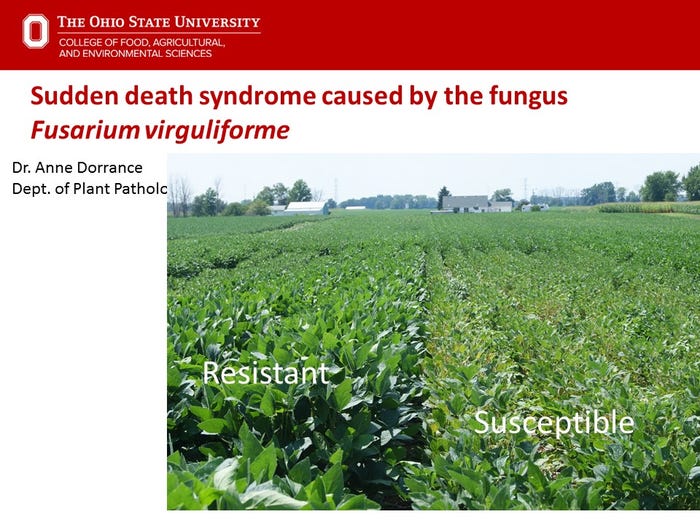
Figure 2 Varietal differences.
Again – if you do observe SDS in your area make a note on what the resistance scores were for SDS on your varieties; that is if you can remember what variety ended up in which field.
The second line of defense is seed treatment. This is best used in fields with a history of disease and susceptible varieties are planted. ILeVO is a newer product which has had very good activity towards Fusarium virguliforme.
Moist, cool conditions provide and environment that is highly conducive to this disease. If we could only have the weather cooperate with our planting schedules – but this isn’t possible in Ohio. Reducing Soybean Cyst nematode populations is also key. There is conflicting information in the literature, but overall anything we can do to reduce the numbers of SCN in the soil will greatly help.
Other diseases that cause premature dying of soybeans include: Sclerotinia stem rot, Diaporthe stem canker and brown stem rot. There are a lot of similarities among these, many of these diseases will develop necrosis in between the veins. Sclerotinia will develop a bleached stem where the infections occurred, Diaporthe will have a clear necrotic lesion on the lower stem, and brown stem rot will have chocolate brown discoloration continuously or spotty through the pith of the affected plant.
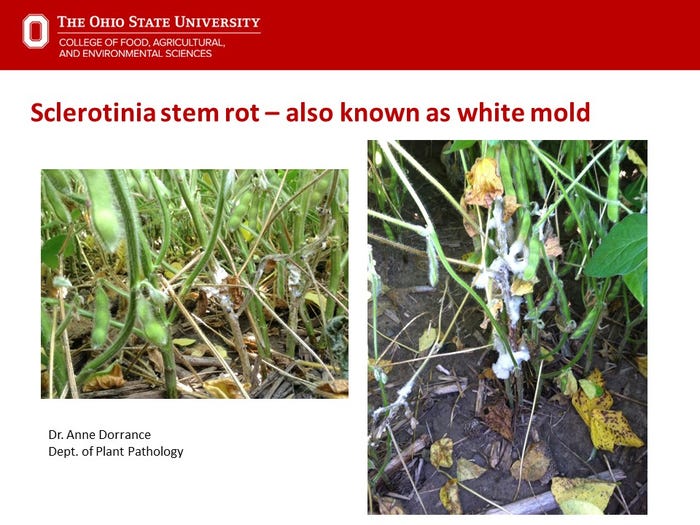
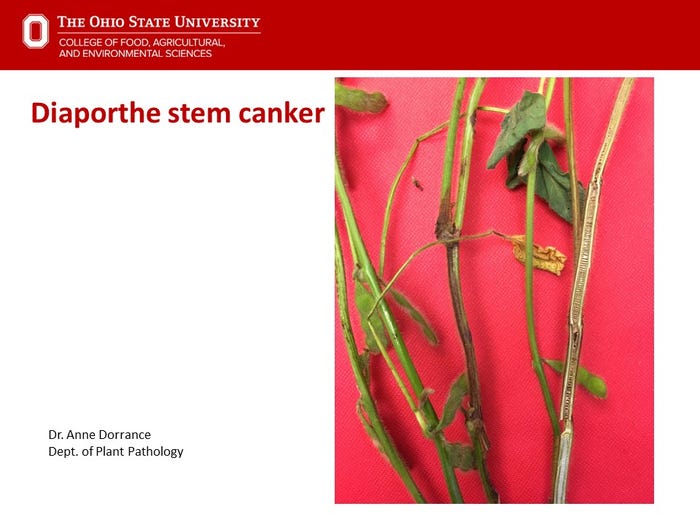
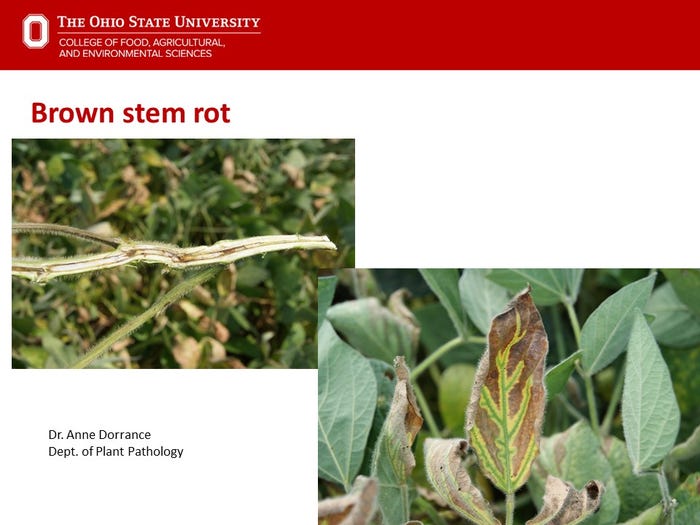
About the Author(s)
You May Also Like




